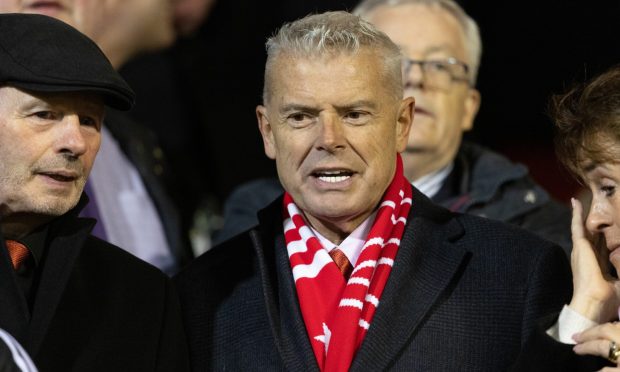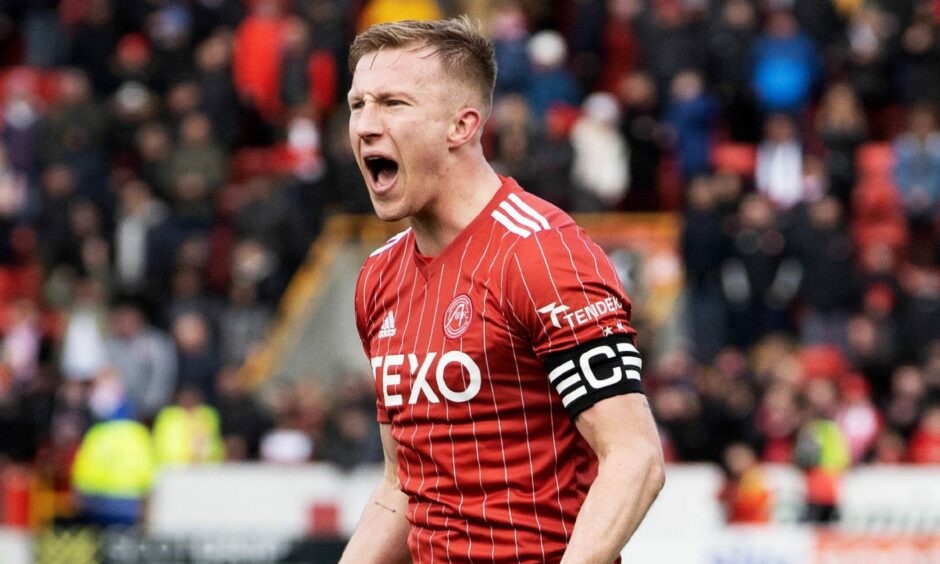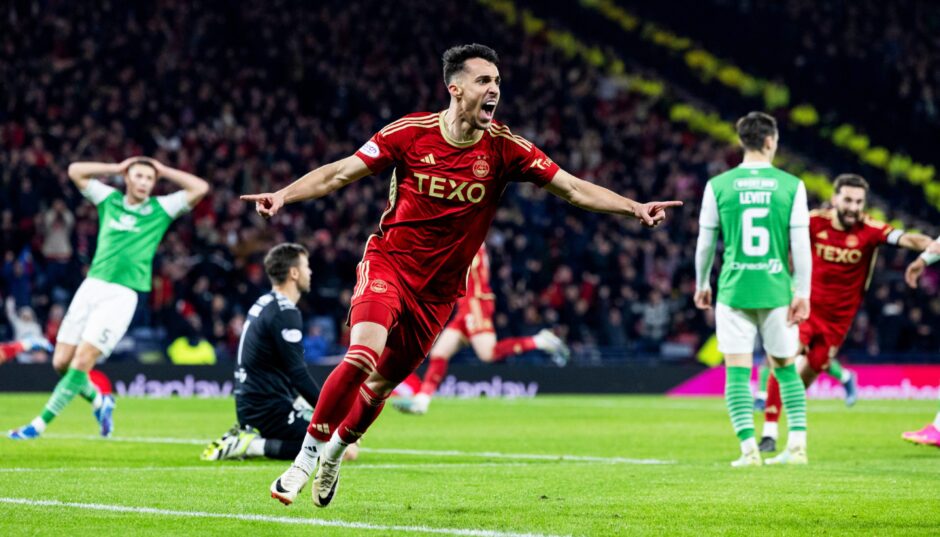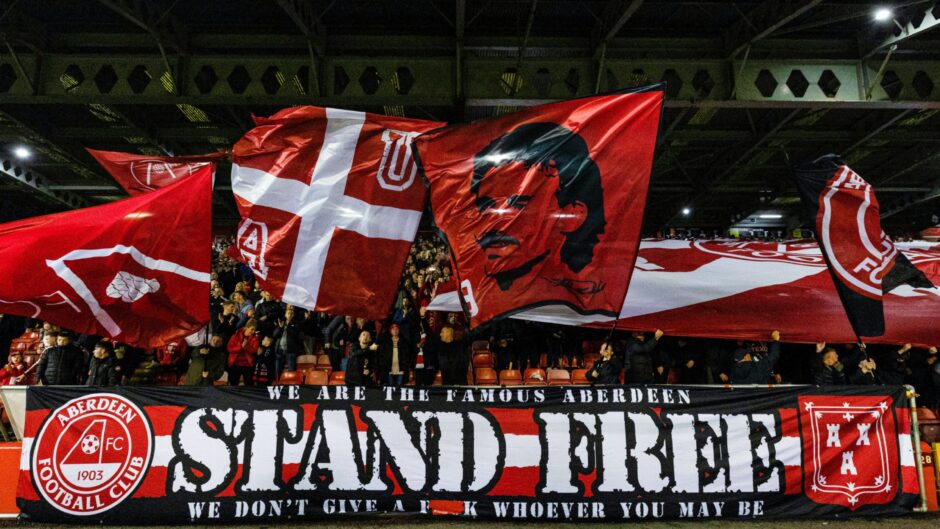Aberdeen’s annual accounts have laid bare the importance of developing and selling talent to the club’s financial model – with player sales a huge factor in the Dons making a net profit of £1.1 million for the year ended June 30, 2023.
Despite playing in red, the Pittodrie club reported they were back in the green having announced losses of more than £5m in their two previous sets of annual accounts.
From the start of July 2022 to end of June this year, Aberdeen’s turnover was £15.77m, compared to £13.86m in the previous financial year (2021/22) – a lift of 14% or almost £2m.
This turnover boost came from higher ticket, sponsorship, commercial and broadcasting income, with the 12-month period covered by the latest accounts encompassing a 2022/23 season where the Reds secured prize money from a third-place finish in the Premiership and also felt the financial benefits of reaching the League Cup semi-final.
However, Aberdeen had previously finished a lowly 10th in the 2021/22 campaign, and the knock-on financial effects of this – most obviously, the reduced prize money from that season – can also be seen in the accounts revealed on Saturday.
Significant investment was made in former boss Jim Goodwin’s Dons playing squad in summer 2022 after the dismal 21/22 league campaign, with his replacement Barry Robson also backed in the early part of summer 2023.
Transfer outlays on striker Duk (from Benfica, £400,000) and Shayden Morris (Fleetwood Town, undisclosed) last summer, and Leighton Clarkson (Liverpool, undisclosed) and Ester Sokler (Radomlje, £300,000) this summer, all fell within the period in covered by the accounts.
This meant, despite the increased turnover, for the 12 months to June 30, 2023, Aberdeen’s operating loss was £6.27m, rising from £5.29m in their 2021/22 accounts.
As well as the impact of reduced prize money and expenditure on transfer fees, another contributing factor to overarching £6.27m loss figure was Aberdeen’s first-team wage bill also rising by £1.7m during the 12 months to the end of June.
This has been attributed, in part at least, to bonuses paid to the first-team when Robson and his players finished third and guaranteed lucrative European group stage football for this season back in May.
The Dons’ wage bill jumped £10.23m to £11.93m year-on-year, pushing the club’s wages-to-turnover ratio up from 74% to 76% (Uefa recommend an upper limit of 70%).
Aberdeen make £7.45m of gains from players sales over 12 months to offset operating loss
However, what Aberdeen’s annual accounts have underlined is the fundamental importance of acquiring, developing and selling talented players to their financial strategy.
A total of £7.45m of gains from player sales during the 12 months covered by the latest accounts wiped out the £6.27m operating loss and left the club with a net profit of £1.18m.
Among the stars leaving Pittodrie between July 2022 and end of June 2023, the Dons sold midfield star Lewis Ferguson to Italian side Bologna for £3.1m and utility man Ross McCrorie to Bristol City for an undisclosed fee.
A clause inserted into the previous sale of youth academy graduate defender Scott McKenna to Nottingham Forest saw the Reds pocket a further £750,000 when the English club secured Premier League survival in May.
Dons chairman Dave Cormack said Aberdeen’s investment in transfer fees paid and higher player wages has been geared towards competing “at the highest levels in Scottish football and to qualify for Europe each season”.
He is pleased the club’s accounts showed they have been able to offset this with “positive player trading”, increased income from commercial avenues and cash related to performances on the pitch.
Chairman Cormack: Aberdeen committed to increased investment balanced by ‘positive’ player sales
Cormack said: “To compete at the highest levels in Scottish football, and to qualify for Europe each season, we continue to invest more in player wages and transfer fees.
“This has led to annual operating losses which, over time, have to be balanced by positive player trading and increased commercial and football performance-related income.
“I’m pleased to report that we are making progress on balancing the significant additional investment in football wages and transfer fees, which leads to these operating losses, against positive income as a result of successful player trading.
“The club’s board and investors are committed to this strategy which has required a significant expansion of recruitment resources to unearth and invest in emerging talent such as Bojan Miovski, Duk and Leighton Clarkson.
“This acquisition of emerging young players combined with continued, substantial investment in our youth academy to develop young, homegrown talent, gives our club the best opportunity of success.”
Looking ahead to next year’s accounts, the European group stage action secured by Robson’s Aberdeen team for this season has already delivered the club a guaranteed multi-million-pound jackpot, while next month’s League Cup final against Rangers will boost club coffers, too.
Higher attendances help put Dons on ‘good footing’; Five-year plan towards full-time women’s programme in works
Aberdeen’s annual accounts also revealed average attendances at men’s first team home games rose from 13,103 to 15,636 last season compared to the 2021/22 campaign.
The Dons then sold a record 12,250 season tickets for the current campaign off the back of last term’s third-place finish under Robson, and Cormack said: “Crucially for the medium to long-term, season ticket sales among under-18s have risen from 17% to 26% of total season ticket sales over the last three seasons.”
He added: “This steady, off-the-pitch financial performance, combined with progress in our football performance, most notably playing in the group stages of European club competition for the first time in 15 seasons, and getting to our first cup final in five years, puts the club on a good footing.”
The Dons’ latest accounts also revealed plans for further investment in the club’s women’s programme after Clint Lancaster was named as the women’s side’s first full-time boss during the summer.
The club’s board now intend to lay out a five-year plan towards delivering a fully professional, full-time women’s operation.





Conversation